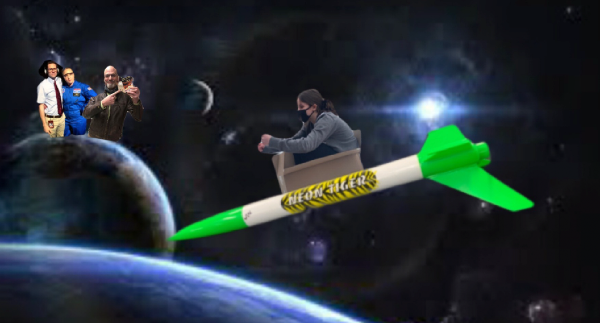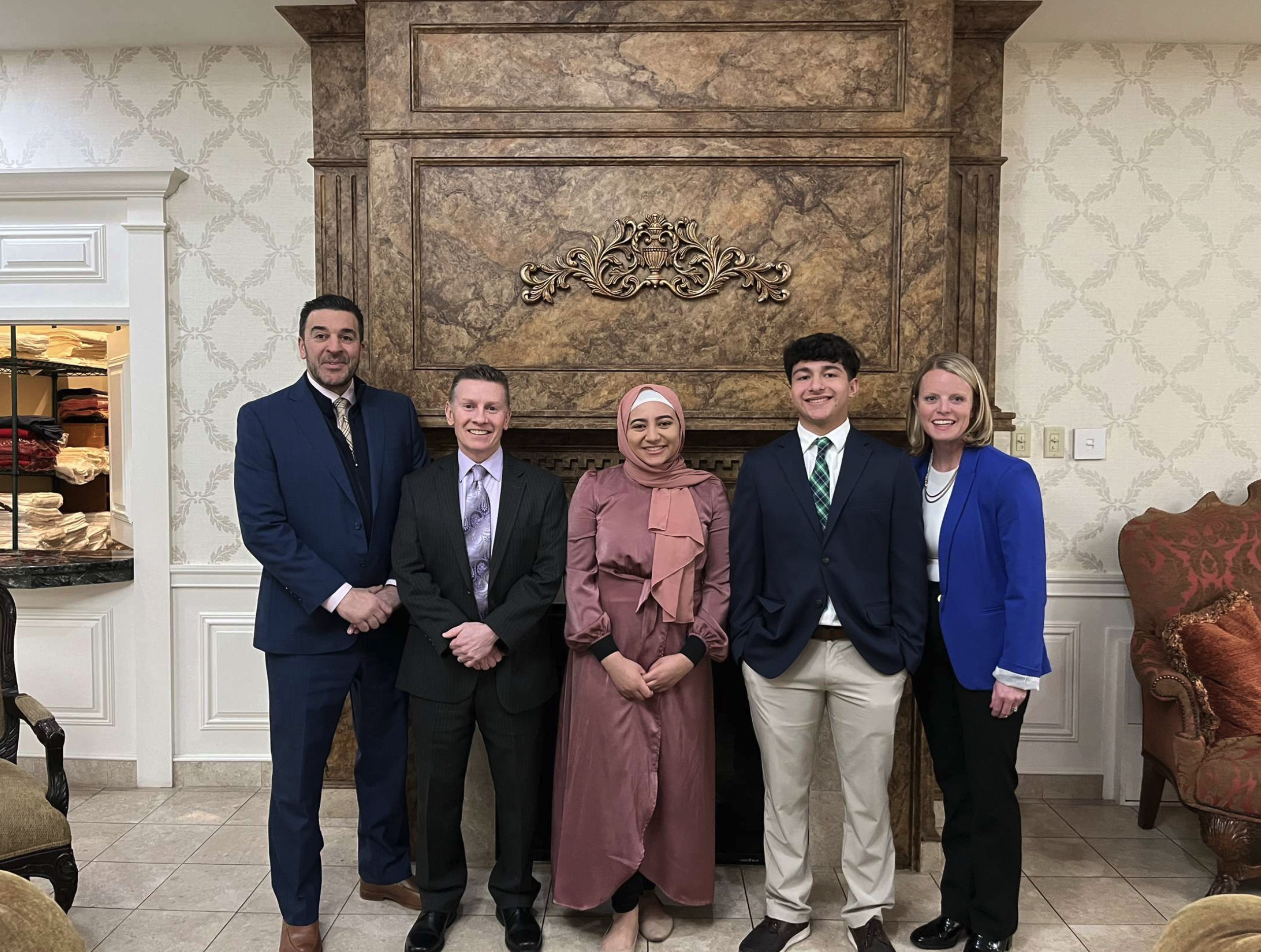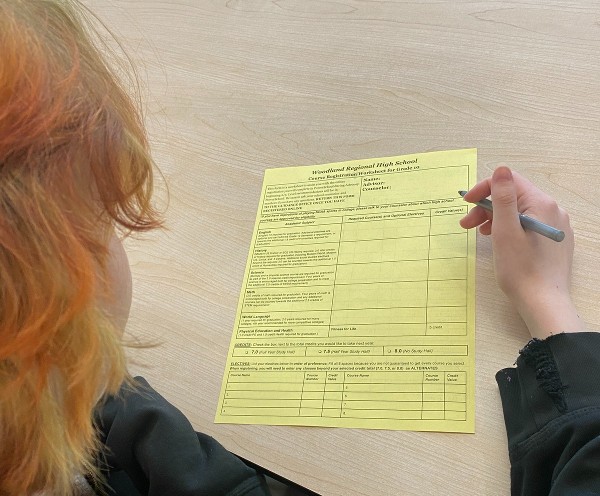October Sky by Homer Hickam is this year’s One Region One Book. This initiative serves to bring people together to discuss and appreciate reading. The story that follows a teenage boy as he handmakes rockets in a small town in Virginia inspired Mark “Rocket Man” Mierzejewski, Woodland physics teacher, and Meghan Geary, One Region One Book advisor, to host an after school rocket building workshop this year. Inspired myself, I decided to go to places this Molly has ever gone before- room 302 to build a rocket.
After school on March 1st, sixteen other students and I walked in and found seats that had rocket building kits placed in front of them. There were students from both Long River Middle School and Woodland Regional Highschool in attendance.
Before we could open our kits, we had to learn about the history, science, and physics behind rockets.
Mierzejewski presented an informational slide show that explained the roles gravity, force, and weight play in rocket production. We found that in order to combat gravity, a strong, long lasting force is needed.
After learning more about the subject, I was excited and ready to begin building. But, as someone with little to no experience with rockets, space, or science, I was nervous that I would be falling behind. However, there were students all over the room who were ready to lend a hand. Brian O’Connell, Isa Mejias, Maddison Donskoy, and Evan Lin volunteered to help students such as myself.
Once the slideshow was over and all questions had been asked, it was time to begin building. The kit came with instructions, and Mierzejewski also put a step by step video on the board for everyone to follow along with. The process was pretty straight forward, but I did run into some difficulties.
First, the glue used to attach the pieces needed to be applied in thin layers, otherwise it would compromise the final product, so I had to be mindful of that. In addition, it took multiple tries to get the fin to stay on the rocket.
Overall, it wasn’t rocket science. The video, in combination with the student volunteers, helped to make the experience easy and enjoyable.
After an hour of hard work and problem solving, everyone in the room had created a usable rocket made of plastic, paper, glue, and tape. We were ready to head outside to the courtyard for take off.
After all of my hard work on my rocket I was both excited and nervous to see it in action. “What if it didn’t work?” More importantly, however, “What if it did?”
We placed the rocket on the stand and Mierzejewski handed me the release button. Then, we all counted down,“5…4…3…2…1…”
nothing.
Initially I was worried that I had done something wrong. Maybe I missed a step, maybe my glue was too thick, maybe a piece was missing. We all agreed that it deserved another shot.
So, I tried again, “5…4…3…2…1…”
BAM!
The rocket shot up in the air. The parachute opened, and the rocket flew all the way to Matthies Park.
Watching the rocket I made not only work, but also travel that far, was extremely rewarding. It was just as exciting to watch the other participants test out their creations.
The experience taught me a lot–not just about physics, gravity, or rockets–it taught me about believing in my abilities and not giving up.
Overall, I think I and the other participants rocked it.



















